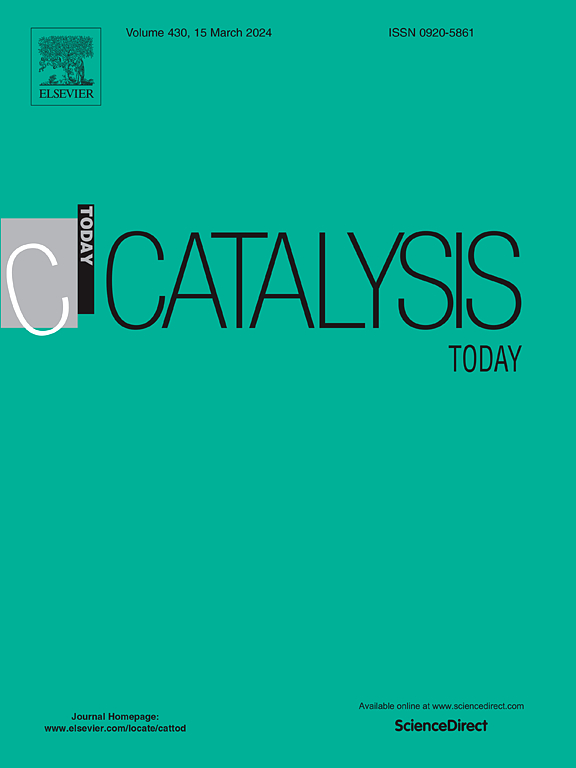Scaled up epoxidation of terpenes in microemulsion
IF 5.2
2区 化学
Q1 CHEMISTRY, APPLIED
引用次数: 0
Abstract
The dioxirane epoxidation was traditionally carried out in a two-phase medium: an organic solvent to dilute the olefin to be epoxidised and an aqueous medium in which the peroxymonosulphate oxidant is dissolved. This phase incompatibility generally requires a large quantity of oxidant and oxygen yield does not exceed 25 %. Despite the major advantages of this technique, it is still only used at laboratory scale. The aim of this study is to illustrate a dioxirane epoxidation ability to produce terpene epoxides at the scale of hundreds of milliliters. The technique employs an acetone catalyst that reacts with oxone® to in-situ form dimethyldioxirane, which epoxidizes the terpene. Oxone® is an aqueous oxidant. To remedy its incompatibility with hydrophobic terpene the use of a surfactant at concentration above its critical micelle concentration (cmc) enabled the terpene to be highly dispersed in the aqueous medium in absence of any additional organic solvent by forming a microemulsion, thus improving interface reaction rate and reducing oxygen loss. At 25°C and for a tr of 90 min, several hundred milliliters of limonene, α-pinene, β-pinene, α-terpinene, γ-terpinene, β-myrcene and farnesene were easily epoxidized with both conversion and selectivity of almost 100 %. Oxygen yields of up to 80 % were achieved, against 29 % in absence of microemulsion. The high selectivity of epoxides, the solvent-free aqueous reaction, the ambient conditions, the simple acetone used as catalyst and the easy separation of epoxides from the aqueous medium make this innovative process more appropriate for easy scale-up.
求助全文
约1分钟内获得全文
求助全文
来源期刊

Catalysis Today
化学-工程:化工
CiteScore
11.50
自引率
3.80%
发文量
573
审稿时长
2.9 months
期刊介绍:
Catalysis Today focuses on the rapid publication of original invited papers devoted to currently important topics in catalysis and related subjects. The journal only publishes special issues (Proposing a Catalysis Today Special Issue), each of which is supervised by Guest Editors who recruit individual papers and oversee the peer review process. Catalysis Today offers researchers in the field of catalysis in-depth overviews of topical issues.
Both fundamental and applied aspects of catalysis are covered. Subjects such as catalysis of immobilized organometallic and biocatalytic systems are welcome. Subjects related to catalysis such as experimental techniques, adsorption, process technology, synthesis, in situ characterization, computational, theoretical modeling, imaging and others are included if there is a clear relationship to catalysis.
 求助内容:
求助内容: 应助结果提醒方式:
应助结果提醒方式:


